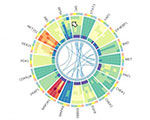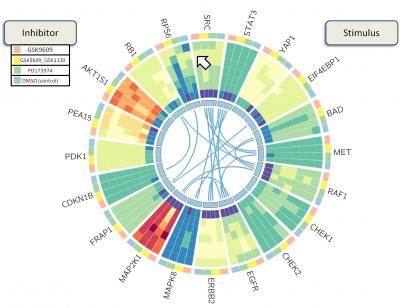Colourful Crowdsourcing Solution to Breast Cancer Challenges
Published Dec-15-13Breakthrough:
A tool to visualize cancer cell interactions demonstrates the potential of open innovation to solve increasingly complex scientific and medical problems.
Company:
The DREAM Project, United States
The Story:
 From studying the fundamental causes of diseases to tracking the spread of epidemics and searching for planets outside our solar system, open innovation is help to provide key scientific insights.
From studying the fundamental causes of diseases to tracking the spread of epidemics and searching for planets outside our solar system, open innovation is help to provide key scientific insights. The concept itself is not rocket science: get a diverse set of brains to work on a problem and you increase the possibility of arriving at a desired outcome in a quicker time frame than more traditional means.
Crowdsourcing Cancer Research
Cancer is an extraordinarily complex disease and research is benefiting from engaging diverse thinking through crowdsourcing initiatives.
There is of course an urgent need to come up with breakthrough solutions. According to Breast Cancer.org, 1 in 8 US women will develop invasive breast cancer, and it is one of the most commonly diagnosed cancers among American women. Just under 30% of cancers in women are breast cancers.
Accelerating Breast Cancer Research
The HPN-DREAM Breast Cancer Network Inference Challenge is a set of three sub-challenges to enhance understanding of protein signalling in cancer cells that can ultimately accelerate the development of treatments. This crowdsourcing science project capitalizes on the breadth and depth of knowledge within the research community.
All participating teams work from the same data set of four breast cancer cell lines.
The challenges are:
• To build network models that represent the active cell signalling pathways in
breast cancer
• Predict the dynamic response of various phospho-proteins to drug
perturbations
• Propose novel strategies to visualize these high dimensional data
In October 2013, the third sub-challenge was won by a team from Rice University who developed a colourful wheel to visualize protein interactions.
“BioWheel visualizes this data in a way that lets people quickly grasp changes in a protein and its connections over time,” said Amina Qutub, an assistant professor of bioengineering based at Rice’s BioScience Research Collaborative.
“If you want to know how sets of proteins in a cancer cell change when you use a particular drug, this allows you to see their relationships quickly.”
The Rice University team’s framework will help scientists see how biological processes such as cell growth, survival, migration and death happen in cancer cells. The innovation can also be used for other biological interactions and even for non-biological problems such as interactions between political parties.
Tackling Fundamental Questions
The breast cancer challenges are presented by DREAM (Dialogue for Reverse Engineering Assessments and Methods), a collaborative platform where teams attempt to answer fundamental questions about biology and systems. It is founded on a belief that the more people who participate in solving a complex problem the more likely it will be solved.
The open innovation contest’s organizers believe that by having numerous teams work on the problem results that would otherwise take a single group years to achieve will materialize within weeks and months.
Next Story »

